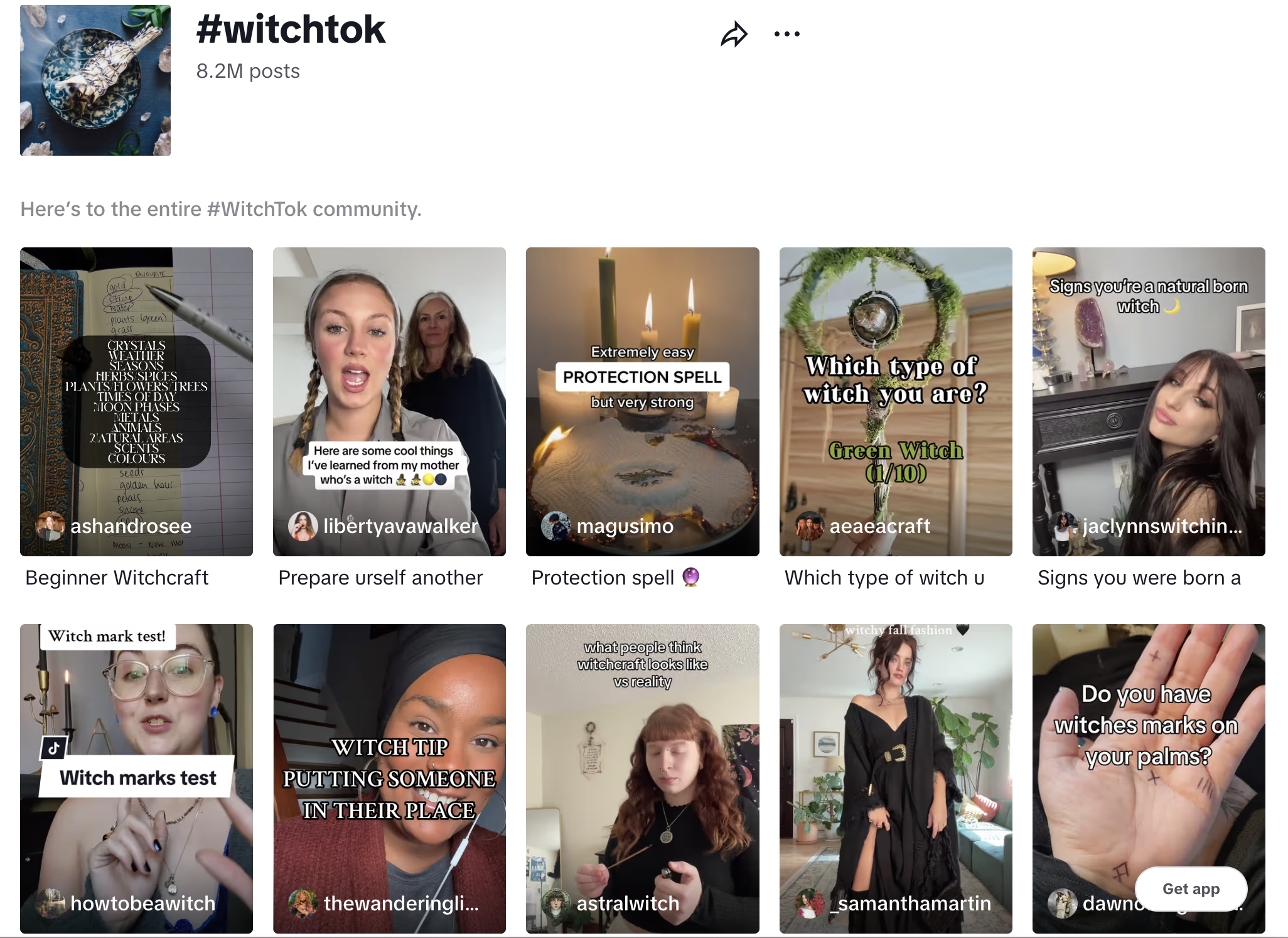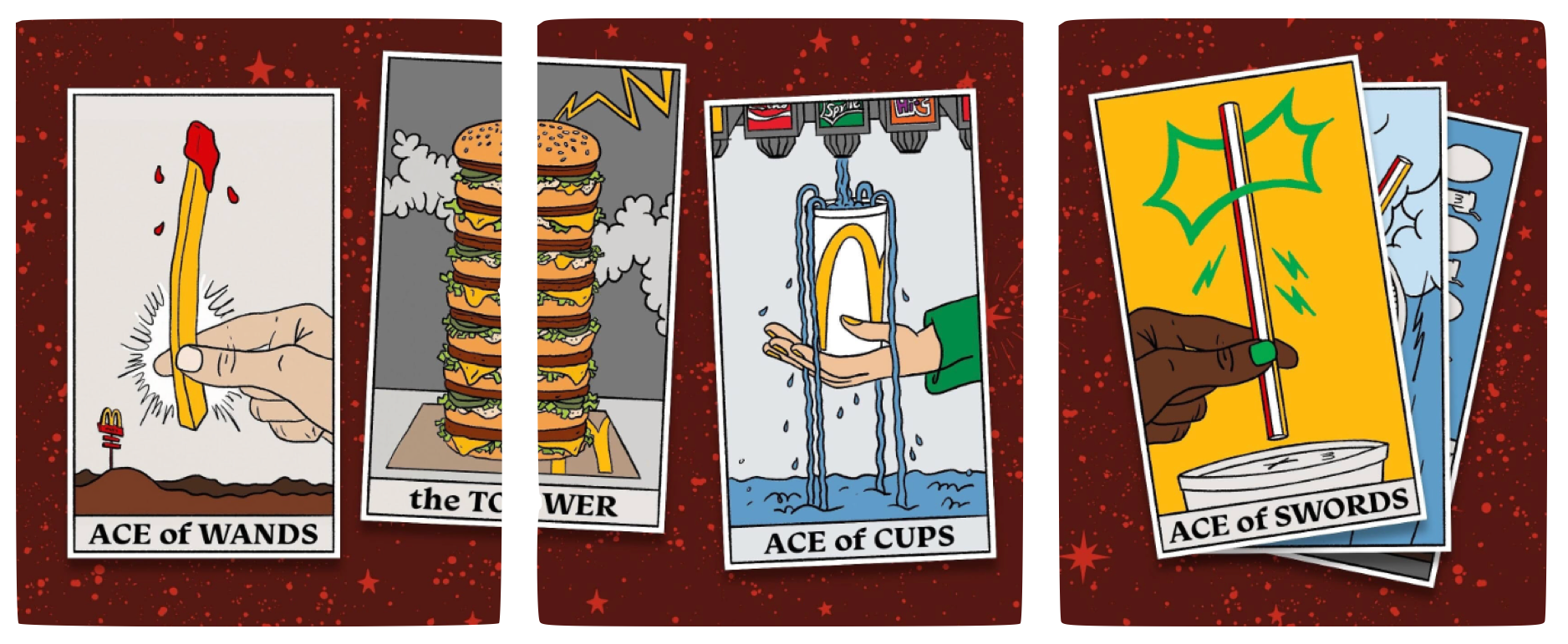
In recent years, society has witnessed a significant transformation in the portrayal of witches, wizards and the practice of magic in the media. Historically depicted as evil figures – mostly women, practicing sinister magic – these characters are now being reimagined in ways that challenge traditional stereotypes.
Modern narratives have shifted away from the “crone archetype” to present younger, more relatable characters with complex inner lives. This evolution reflects broader cultural changes and has contributed to the rise of movements like “WitchTok,” a category-turned-subculture on TikTok where users share occult practices, tarot readings and spiritual insights.
The Rise of #WitchTok
TikTok has provided a conspicuous space for practitioners of esoteric traditions to share their own practices openly, breaking away from centuries of secrecy enforced by Christian persecution and retaliation. This digital subculture fosters education and propagation while allowing marginalised groups – such as women, Black and LGBTQIA+ individuals – to find empowerment through rituals and spells focused on protection and intuition.

Feminist Reclamation
Countless women – mostly “single women and widows,” according to the journalist Mona Chollet – have been accused of witchcraft and executed as a means of reinforcing patriarchal values.
Dr. Susanna Chamberlain has also written about the myth that put forward that women lacked souls, used as an excuse to justify their lack of autonomy and rights, resulting in an absent sense of identity:
“Where women were considered to have no souls, no capacity for rational thought, they were not considered to have selves and their lives were, consequently, often difficult. As women were considered to be incapable of reason, they were not allowed to be self-determining; they could not be permitted to make decisions for themselves, to be citizens or own property.”
Feminist literature has since reclaimed pagan traditions as sources of empowerment. Books like Women Who Run With the Wolves by Clarissa Pinkola Estés and When God Was a Woman by Merlin Stone celebrate feminine energy and spirituality as empowering tools for self-discovery, while challenging patriarchal narratives. These works have inspired a renewed interest in esoteric traditions among those seeking alternatives to male-centred theology.
Mysticism Meets Capitalism
The commercialisation of occult symbols marks another big shift. Esoteric imagery, once confined to niche communities, now appears in mainstream fashion, advertising and branding. McDonald’s, for example, has reimagined tarot cards for marketing campaigns. Elsewhere, fashion brands have been adding mystical design elements into their collections. This trend mirrors astrology’s earlier integration into popular culture in a bittersweet manner – representing a conscious shift in our collective consciousness to be more tolerable, while raising concerns about the commodification of spiritual practices for profit.

Cultural Shifts
The resurgence of interest in witchcraft coincides with periods of social and political instability, as anti-progressive movements gained traction after years of strong progressive sentiment. In this context, marginalised groups turned to esoteric practices not as reactionary escapism but as tools for self-preservation and empowerment. Viral WitchTok content often emphasises spells for protection, manifestation and enlightenment.
Silvia Federici notes in Caliban and the Witch that this revival is possible because belief in magic no longer threatens social order but instead coexists with modern structures.
“Astrology too can be allowed to return, with the certainty that even the most devoted consumer of astral charts will automatically consult the watch before going to work.”
You might be interested to read our (still relevant) New Spirituality Report from 2016, and if you want to join our Witch Club (a SEED CLUB sub-club), you can apply here.
| SEED | #8307 |
|---|---|
| DATE | 03.04.25 |
| PLANTED BY | VICTÓRIA OLIVEIRA |



Discussion